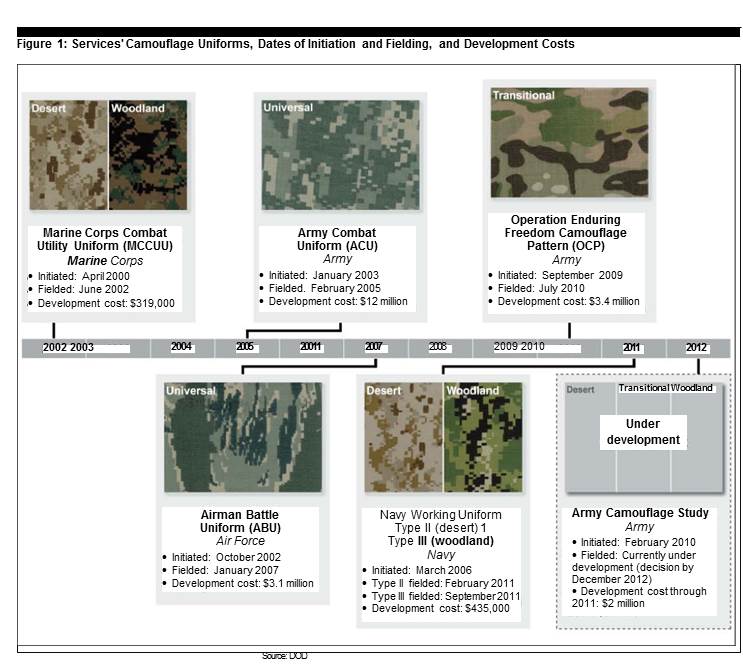The Camo Chronicles, Part 1: Hidden in Plain Sight
What began more than a decade ago as an effort by one branch of the U.S. military to develop a camouflage pattern for 21st-century combat evolved into an object lesson in bureaucratic inefficiencies.
There probably weren't too many eyebrows raised back in 2000 when recently appointed United States Marine Commandant James L. Jones announced that one of his priorities would be a redesign of the camouflage pattern used for the Corps' Battle Dress Uniform (BDU). The BDU's M81 Woodland pattern, first issued nearly 20 years earlier, was based on a design developed in 1948, so its age alone was likely enough to lead to considering a more modern—and presumably more effective—replacement. (The Corps also used a Desert BDU developed in 1962 and issued from 1982 to 1995, when it was replaced by a derivative called the Desert Camouflage Uniform.) Add the issues of the increasing prevalence of IR detection and the need for camo suitable for a broad spectrum of operating environments, and the move probably seemed no more controversial than the release of a software patch.
To the Corps' credit, the creation of the digital Marine Corps Pattern, or MARPAT, and its incorporation into the Marine Corps Combat Utility Uniform (MCCUU), was a model of efficiency. Research, testing, and initial deployment were completed in just over two years at a development cost of only $319,000, and a 2012 General Accounting Office report on the development of camouflage uniforms lauded the Corps for achieving a successful outcome by following fundamental principles of military acquisitions.
But what should have ended as a feel-good story of fiscal prudence and sound decision-making instead became the launch pad for a series of similar projects most notable for their lack of those very qualities. As one journalist put it, “the U.S. military as a whole seemed to fracture” upon the arrival of MARPAT, “with each branch wandering aimlessly in a bizarre search for sartorial identity.” The estimates of money spent by the Army, Navy, and Air Force on new camo development and deployment ballooned from millions into billions, and soon serious attention was being paid to the soldiers, sailors, and airmen who, by many estimations, were essentially live-fire beta testers.

Timeline of camouflage development efforts and costs, 2001 - 2012. Source: GAO
Is the proliferation of camouflage patterns from just two prior to the introduction of MARPAT to a dozen with the arrival of the US Army's “Scorpion W2” in 2014 the result of interservice rivalries and jealousies? Or is it the consequence of designing a unique uniform in an attempt to “increase the morale of personnel and aid in recruitment?” There's probably no way to arrive at a definitive answer to those questions. What's more interesting is looking into why and how each service made the choices it did and, most importantly, seeing how those choices fit in with the legitimate goals—and the parameters delimiting them—of combat-uniform design.
Next: The Elements of Design